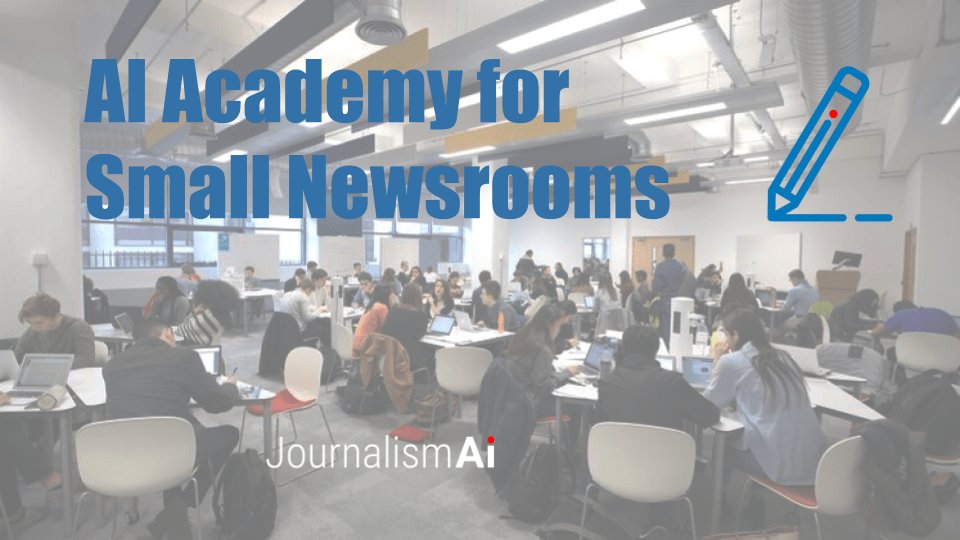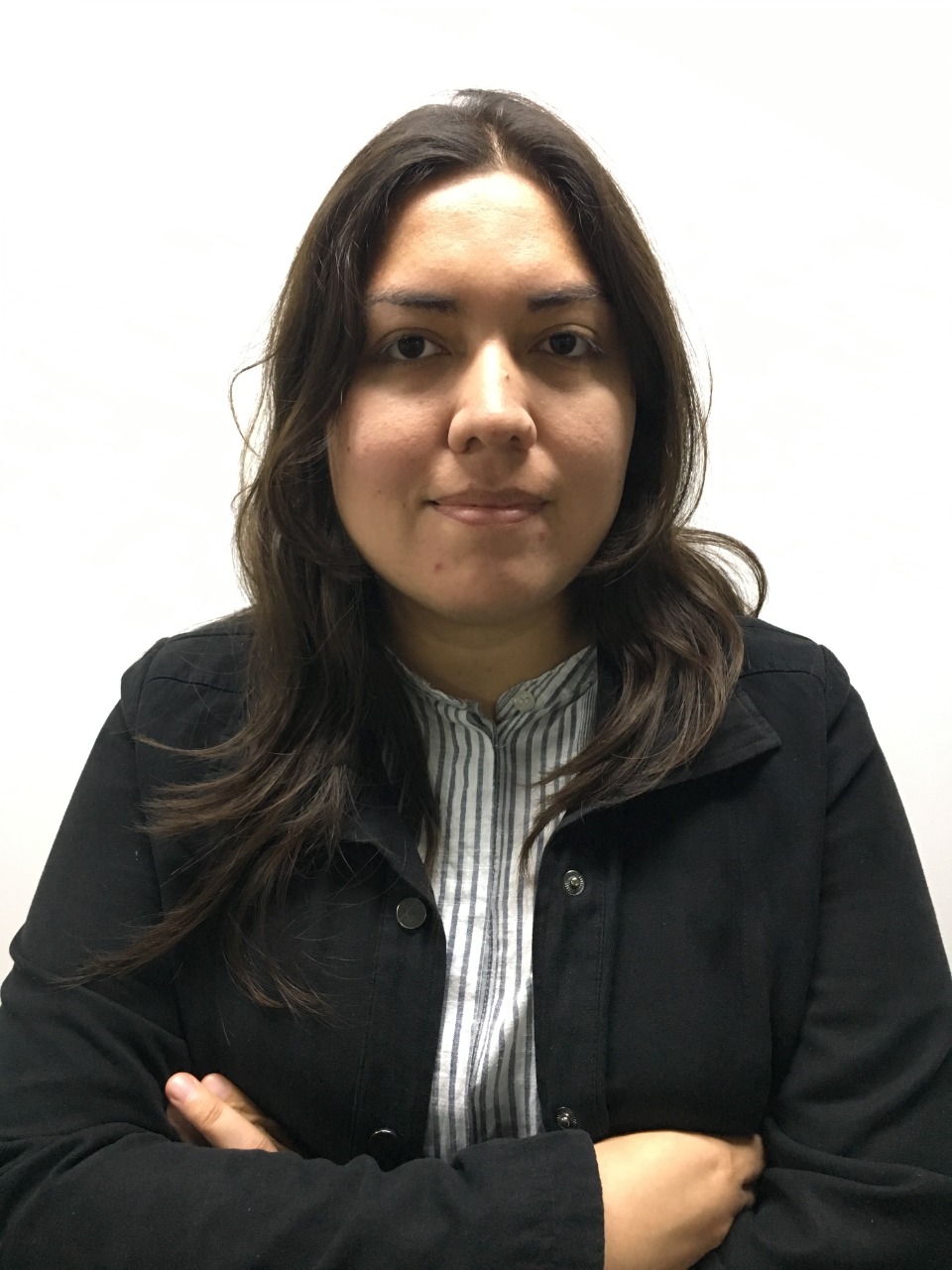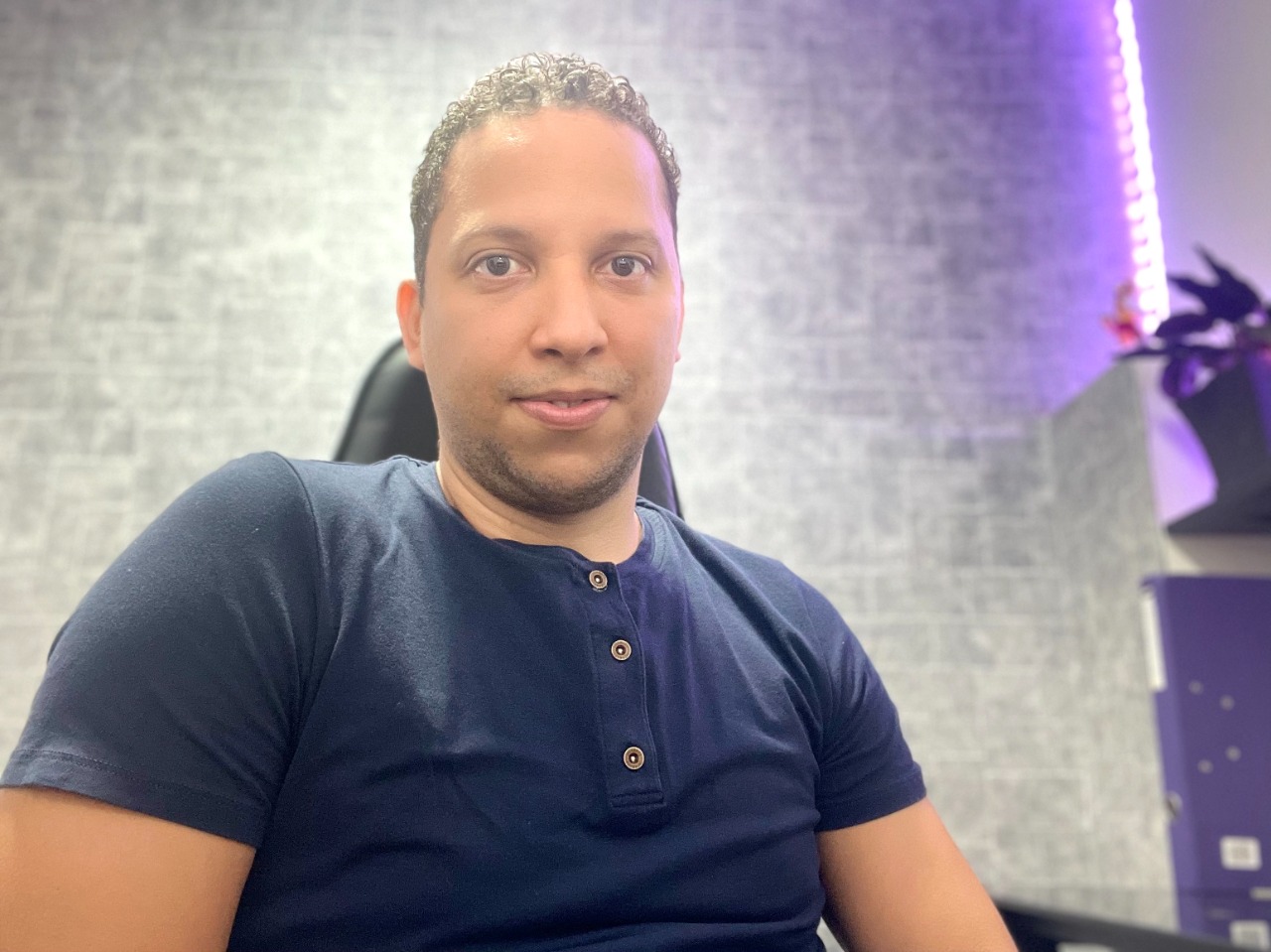For the first time, representatives of small newsrooms in countries such as Cuba, Paraguay and El Salvador will participate in an initiative to learn to apply artificial intelligence to journalism.
This is the JournalismAI Academy for Small Newsrooms program, a project of Polis, the London School of Economics' journalism think-tank, which seeks to empower news organizations to use artificial intelligence to optimize their work processes.
The Academy will hold its first edition in September and October of this year, with 40 participants from the Americas and the Asia-Pacific region. This comes after a successful pilot version last year, with 16 participants from small newsrooms in Europe, Africa and the Middle East.

The Academy is organized by JournalismAI with support of Google News Initiative (Photo: JournalismAI).
From the Americas, of the 19 journalists, editors and media directors who are participating this year, 14 of them are from Latin America. The Latin American countries represented are Argentina, Brazil, Colombia, Mexico, Venezuela, Ecuador, Cuba, El Salvador, and Paraguay. The latter four are participating for the first time in a JournalismAI initiative.
“We are extremely happy with the diversity of the countries that are represented,” Mattia Peretti, director of JournalismAI, told LatAm Journalism Review (LJR). “In the outreach process we made sure that we were contacting as many people as possible in all the countries in Latin America. [...] I am very happy to find out that, for example, a newsroom in Paraguay I never heard of came across our work and is interested. That means that our profile is starting to have that global reach that we were hoping to design, and that’s brilliant.”
The initiative is aimed at members of organizations with fewer than 100 members who have a basic knowledge of artificial intelligence. Those selected will have access to a series of master classes taught by experts working at the intersection of journalism and artificial intelligence, including Florencia Coelho, from La Nación (Argentina); Anna Vissens, from The Guardian (UK); and Pedro Burgos, from the Insper Institute of Education and Research (Brazil). In addition, they will carry out activities to put into practice artificial intelligence processes in journalism during and after the program.
Despite the economic and technical challenges of implementing artificial intelligence processes in their newsrooms, participants from elTOQUE and Periodismo de Barrio, from Cuba; Gato Encerrado, from El Salvador; and Ciencia del Sur, from Paraguay, hope to acquire knowledge that will enable them to enhance their journalistic work in areas such as management and analysis of large amounts of data, verification of discourse and the relationship with their audiences.
Despite the fact that transparency and access to information are rights recognized in the current Constitution of Cuba, a Law on Transparency and Access to Information that regulates the ways in which citizens and journalists can obtain public data may be approved in October.
With that in mind, Ismario Rodríguez, journalist and audiovisual director of the digital native news outlet Periodismo de Barrio, applied for the JournalismAI Academy for Small Newsrooms. He wanted to learn artificial intelligence techniques and tools that will help his organization analyze government information that, they hope, will be released after the approval of such law.

Ismario Rodríguez is the audiovisual director of the native digital media Periodismo de Barrio, in Cuba. (Photo: Courtesy)
"A lot of content is already being generated at the government level. [The new law] is going to make much more information available to the population. And that's when the knowledge we have at Periodismo de Barrio about how to deal with that information that's going to be released comes in," the journalist told LJR. His news outlet has a staff of 10 people.
Rodríguez thinks that the artificial intelligence tools that help journalists analyze content, search for information and organize data can become key for the survival of Periodismo de Barrio in the current media ecosystem.
His expectations for the Academy are to learn best practices from experts to take advantage of these tools to support Journalismo de Barrio's journalists in accelerating and optimizing the generation of content for their investigative stories, which mainly cover human rights and environmental issues.
"There is an endless world, depending on what each one is interested in, that artificial intelligence can help us obtain and extract. Right now we get it almost blindly, we don't have a tool to help us map or get that information that can help us improve our content. I think the workshop can help us do that," Rodriguez said.
The first approach that Periodismo de Barrio had with artificial intelligence was through COVIDE, a chatbot for WhatsApp, Messenger and Telegram developed in 2020 in alliance with the digital media elTOQUE, also from Cuba. The tool uses Natural Language Processing (NLP) techniques to answer users' doubts about COVID-19, and is connected to the LatamChequea network's database of verified content.
For elTOQUE, COVIDE was also the first approach to artificial intelligence tools, although it has not been the only one. The independent journalism platform also developed a currency and cryptocurrency calculator that takes into account official and unofficial market rates.
The tool works through bots that "detect" ads in informal currency buying and selling groups in social media and on platforms such as HeavenEx and Qbita. Then, an algorithm processes the information and uploads to a database that allows queries and daily display of exchange rates in real time on the media site, Abraham Calas, director of innovation and development at elTOQUE, who was also selected to participate in the JournalismAI Academy, told LJR.
"The idea of participating in this course is to see which programming libraries we can apply to what we are already doing," Calas said. "It’d be hard to teach journalists to make an artificial intelligence model in two months. I think the course focuses more on existing tools, how they work and the opportunities and benefits of doing journalism with these tools."
Calas, who is a systems engineer, has the task, upon finishing his participation in the Academy, of transmitting what he has learned to the elTOQUE team members who do not have a background in computer science, so they can apply it in the news outlet’s projects.
One such project under development is Hermes, a news-gathering platform that searches and selects articles from a collection of different media. This is used by elTOQUE for its news monitoring service and for sending its daily newsletter with the most relevant information about Cuba to embassies and other institutions.
So far, the news filtering and classification is done manually, but Calas hopes to be able to apply an artificial intelligence mechanism to do these processes automatically and in less time, and that could also allow other functions to be added.
With the optimization based on artificial intelligence, Hermes could become a product that could be marketed as a service to other institutions or media that need to create newsletters or to do news curatorship. This, Calas said, would benefit the sustainability of elTOQUE, which is currently financed in part through communication services to third parties.
The news outlet also has the DeFacto Bot, which, like COVIDE, works on Telegram, WhatsApp and Facebook Messenger. The tool is part of DeFacto, elTOQUE's fact-checking unit, and uses machine learning technology that contrasts users' questions with a database of verified information.
Following his participation in the Academy, Calas will seek to incorporate the DeFacto Bot into Hermes and aggregate the latter's news database to answer users' questions.
Science journalism is one of the areas in which artificial intelligence can have a special impact, given the high volume of data involved. That was one of the motivations of Daniel Duarte, general editor of the digital science journalism media Ciencia del Sur, from Paraguay, to apply to the Academy for Small Newsrooms.

Daniel Duarte, editor of Ciencia del Sur, hopes that artificial intelligence will help independent science journalism to have a competitive advantage over Paraguay's mainstream media. (Photo: Courtesy)
"The speed at which new information is created is much faster than what we can consume or even process," Duarte told LJR. “We need a tool to help us stay one step ahead and we believe that artificial intelligence can be a help in this to handle large volumes of data.”
Duarte said he expects to find a way in which artificial intelligence can help Ciencia del Sur, which covers scientific issues and science policy in the Southern Cone countries, and also independent science journalism in general, so it can have a competitive edge against big media, especially in the analysis of public data.
"Governments for some years have been generating a large amount of open source databases on projects, contracts, companies, individuals who contract with the State. Simply reviewing all that data manually is impossible, so I think artificial intelligence could help us in the first place," Duarte said. “Surely we are missing out on stories because we don't have the human capacity to manually review the documents.”
Ciencia del Sur, with a newsroom of five permanent staff and at least 20 external collaborators, is also dedicated to the dissemination of scientific articles by academic researchers.
That is why it is also important for them to monitor articles published in scientific journals around the world, as well as to identify what Duarte calls "predatory journals," publications that pose as serious journals and offer researchers to publish academic papers without any kind of review in exchange for payment.
"Doing this very thorough work to know who is publishing where, I think, is something that artificial intelligence could help us with," Duarte said. "There are many researchers from Paraguay and Argentina who publish in these international journals and to have an idea of the networks of researchers or countries, which countries publish the most... those kinds of connections and patterns that we can't see because at a glance because it's a lot to process, those are the kind of patterns that artificial intelligence would help us detect."
For journalist Xenia Oliva, from El Salvador, incorporating artificial intelligence techniques in her newsroom does not mean automating the journalistic process or replacing the work of journalists, but rather serving as a complement to the investigative work done by her news outlet, Gato Encerrado digital magazine.
"We don't want to leave out the value that each person gives to each article, each feature story or investigation," Oliva, the only Central America representative in the JournalismAI Academy, told LJR.
"There’s few of us [newsroom staff members], but we are eager to expand our work and reach more people. To know how to intersperse these tools but also with that authenticity that the work of journalism must have. The work of making a story cannot become automatic, but it can complement the investigative work we do in Gato Encerrado."

Xenia Oliva, from Gato Encerrado (El Salvador) is the only journalist from Central America in the JournalismAI Academy. (Photo: Courtesy)
With a team of 14 people, Gato Encerrado does not have programmers among its staff, but has alliances with other organizations that support it with technical issues.
That is why for Oliva, who was part of the data journalism unit of the newspaper El Diario de Hoy, it was important to participate in the Academy and learn how other small media around the world are working to launch artificial intelligence projects.
"We also want to learn from other colleagues about alternatives they are using to these high-cost tools and if it is possible to have access," Oliva said. "We’d hope to have programmers in the newsroom, but the important thing is to have this base of knowing how other media are working."
The magazine, which focuses on human rights issues and environmental phenomena, has a data verification section, Ojo de Gato, which is responsible for verifying the truthfulness of speeches by public officials and politicians. Oliva hopes to learn about tech tools that optimize the fact-checking of speech, both in text and images.
In addition, the Ojo de Gato section also plans to launch a chatbot for WhatsApp to help its readers access their fact-checking.
"[The Academy] may also expand the access we will have through that tool," Oliva said. "Our interest in this tool is to help our audiences have greater access to verified information, because of this problem of fake news and disinformation."
While some artificial intelligence developments involve high costs and the work of specialized personnel, there are more and more tools that are free or easily accessible. However, for small Latin American media outlets participating in the JournalismAI Academy for Small Newsrooms, the cost of implementing these tools is cause for concern.
“The more resources you have, oftentimes of money and especially talent (people with the right skills), the more you can do," Mattia Peretti said. "So there is always going to be a disadvantage for the smaller organizations. But at the same time, some of the most fascinating developments that we have seen in the last three years happen from just small organizations that test something."

Abraham Calas is director of innovation and development at elTOQUE. (Photo: Courtesy)
elTOQUE has been able to take advantage of free tools offered by some technology companies for the development of its DeFacto Bot, such as Dialogflow, a Google application for developing chatbots; and Wit.ai, Facebook's natural language processing tool.
"These are free tools. What is important is to have a staff that does know how to use them," Abraham Calas said. “The use of libraries is totally free and any news outlet can use them.”
For Daniel Duarte, of Ciencia del Sur, the main challenge will be the initial implementation of the tools, given that in his newsroom they do not have staff specialized in these technologies.
"Financially, I think it would not be very costly, but it would demand a considerable time effort, at least to put those tools together at the beginning," Duarte said. “We would need the help of a consultant or an external person to help us implement these tools.”
A good internet connection is also crucial for the optimal functioning of artificial intelligence tools in newsrooms. In Cuba, where internet access is unstable and sometimes slow, connectivity would be one of the main challenges.
"Even so, we have used free tools with this meager connection. Sometimes I do it at the house of friends who have a better connection [...], and sometimes I work in the early morning [when the connection is better]," Ismario Rodríguez said. "I use geolocation tools, or to extract information. I make a lot of use of tools that are available in the early mornings."